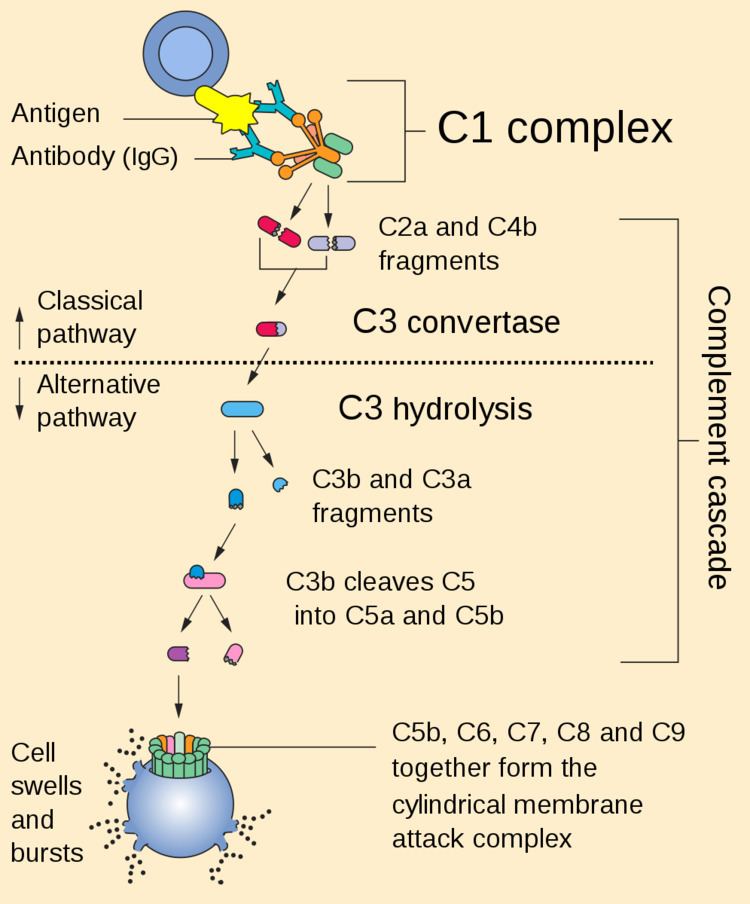 | ||
The alternative pathway of the complement system is an innate component of the immune system's natural defense against infections.
Contents
The alternative pathway is one of three complement pathways that opsonize and kill pathogens. The pathway is triggered when the C3b protein directly binds a microbe. It can also be triggered by foreign materials and damaged tissues.
Cascade
It is initiated by the spontaneous hydrolysis of C3, which is abundant in the blood plasma. "Tickover" occurs through the spontaneous cleavage of the thioester bond in C3 to form C3(H2O).
This change in shape allows the binding of plasma protein Factor B, which allows Factor D to cleave Factor B into Ba and Bb.
Bb remains bound to C3(H2O) to form C3(H2O)Bb. This complex is also known as a fluid-phase C3-convertase. This convertase, the alternative pathway C3-convertase, although only produced in small amounts, can cleave multiple C3 proteins into C3a and C3b. The complex is believed to be unstable until it binds properdin, a serum protein. The addition of properdin forms the complex C3bBbP, a stable compound which can bind an additional C3b to form alternative pathway C5-convertase.
The C5-convertase of the alternative pathway consists of (C3b)2BbP (sometimes referred to as C3b2Bb). After the creation of C5 convertase (either as (C3b)2BbP or C4b2a3b from the classical pathway), the complement system follows the same path regardless of the means of activation (alternative, classical, or lectin). C5-convertase cleaves C5 into C5a and C5b. C5b binds sequentially to C6, C7, C8 and then to multiple molecules of C9 to form membrane attack complex.
Regulation
Since C3b is free and abundant in the plasma, it can bind to either a host cell or a pathogen surface. To prevent complement activation from proceeding on the host cell, there are several different kinds of regulatory proteins that disrupt the complement activation process:
Role in Disease
Dysregulation of the complement system has been implicated in several diseases and pathologies. Age Related Macular Degeneration (AMD) is now believed to be caused, at least in part, by complement mediated attack on ocular tissues. Alternative Pathway activation might also play a significant role in kidney pathology associated with Lupus
